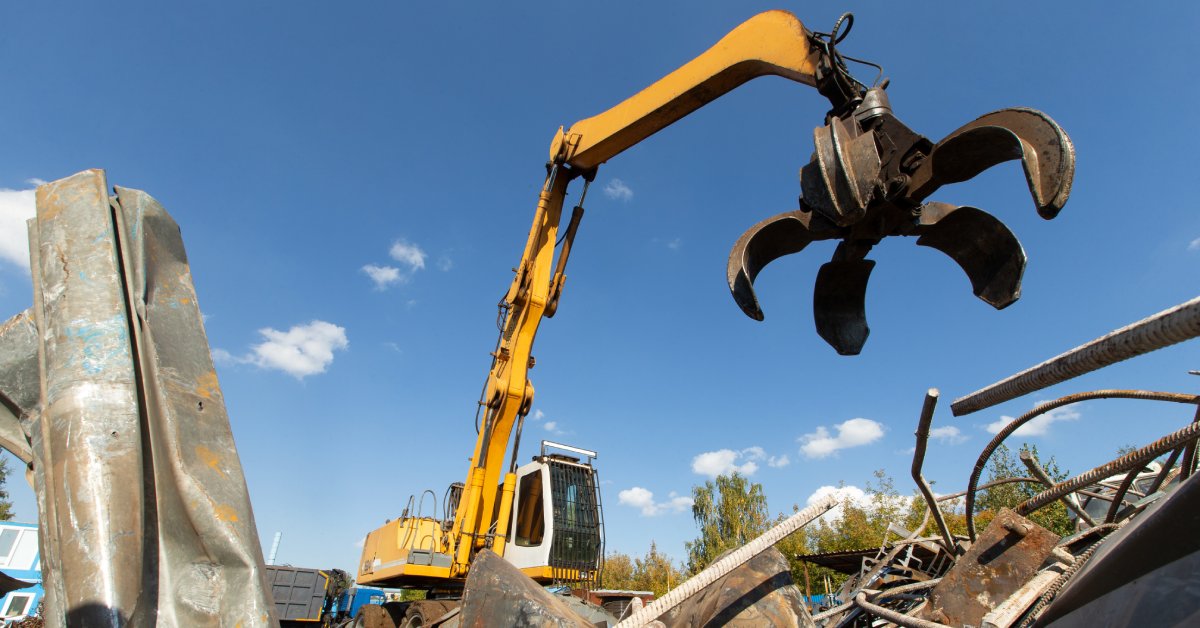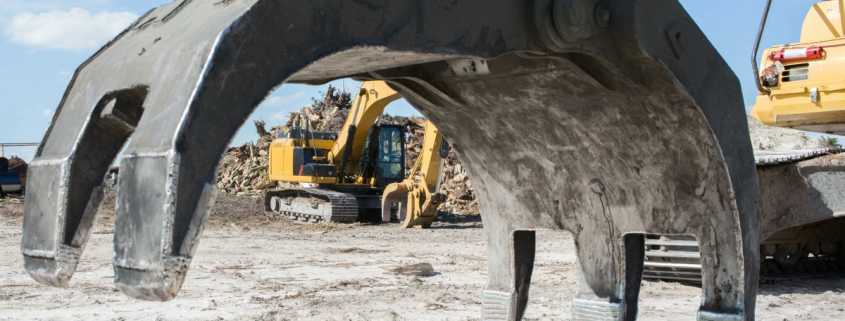The Evolution of Excavator Lifting Attachment Technology
Excavators have long been a cornerstone of construction, demolition, and excavation operations. As projects have become more complex and demanding, so too has the technology behind lifting attachments evolved.
From traditional buckets to advanced grapples and multipurpose tools, the range of attachments available today allows operators to tackle a variety of tasks with ease. In this exploration of excavator lifting attachment technology, we’ll delve into their evolutions and how these innovations have shaped the industry.
The Early Days of Excavator Attachments
Introduction of the Bucket as the First Attachment
The bucket has been a fundamental part of excavator technology since its inception, marking the beginning of the attachment evolution. William Otis and Charles French crafted the steam shovel for strength and durability, enabling them to dig into tough ground conditions in the early 1800s. As excavators became more popular on construction sites, the design of these buckets evolved to enhance their functionality. Different sizes and shapes emerged to accommodate varying tasks, from deep digging to material handling.
This early innovation set the stage for further exploration into more specialized attachments, demonstrating the importance of adaptability in equipment. The bucket’s success can be attributed to its simplicity, allowing operators to efficiently complete basic excavation tasks while laying the groundwork for future advancements in attachment technology.
Limitations of Traditional Bucket Designs
While traditional bucket designs laid the foundation for excavator attachments, they weren’t without their shortcomings, and the rapidly evolving world of construction demanded more power and precision. One of the main limitations of these early buckets is their lack of flexibility in handling various types of materials.
For instance, a standard bucket is primarily effective for digging and moving loose materials such as soil or gravel. However, when it comes to more challenging tasks, like picking up larger debris or heavy objects, the traditional bucket often falls short.

The Advent of Hydraulic Technology
Development of Hydraulic Systems in Excavators
We see the first fully hydraulic excavator come onto the scene in the 1890s, crafted by the brilliant minds at Kilgore Machine Company. Unlike mechanical systems, hydraulic systems leverage pressurized fluid to create powerful movements, allowing for more complex and efficient operations. This innovation enabled excavators to perform tasks that were previously deemed too challenging or time-consuming. For instance, by harnessing the power of hydraulics, operators could easily lift heavier loads or reach greater depths without compromising stability.
The versatility of hydraulic systems also paved the way for the development of a diverse range of attachments. With hydraulic functions, attachments such as grapples, hammers, and shears became possible, each designed to address specific challenges faced on construction sites. This advancement meant that operators no longer needed to rely solely on basic buckets. Instead, they could now select attachments tailored for particular tasks, improving both efficiency and effectiveness in operations.
Impact on Lifting Capacity and Precision
The evolution of hydraulic technology brought remarkable improvements in both lifting capacity and precision for excavators and their attachments. With the ability to use hydraulic systems, excavators can now handle significantly heavier loads compared to traditional models. Operators can now complete tasks that once required multiple machines, all thanks to the powerful hydraulic mechanisms that allow for smoother operation and control.
Moreover, modern excavator attachments, with hydraulic functions, offer better accuracy in various tasks, from digging to material manipulation. Operators can finely tune the movements of a diverse range of attachments, allowing them to work in tight spaces or delicate environments without risking damage to surrounding structures.
Diversification of Attachments
Emergence of Specialized Attachments
As excavator technology progressed, the demand for specialized attachments became evident. Operators needed tools that could handle specific tasks with greater efficiency and effectiveness. This led to the emergence of specialized attachments like grapples and thumbs, which provided enhanced capabilities beyond the traditional bucket.
Grapples, for instance, are claws that can securely grip and lift irregularly shaped objects, such as logs or debris, making them invaluable on construction sites, forestry operations, or recycling facilities. They allow for quick pick-up and placement, significantly speeding up workflows.
Thumbs offer a versatile solution for controlling and manipulating materials. Attachable to standard buckets, thumbs act like an extra hand, enabling operators to grasp and hold materials while digging or loading. This combination increases productivity, allowing for simultaneous digging and material handling without the need to keep changing out attachments.

Rise of Multipurpose Tools for Versatile Applications
Multipurpose tools for excavators have revolutionized the way operators approach their work. These innovative attachments combine multiple functions into one unit, enabling users to seamlessly switch between different tasks without the need for constant changes in equipment. Devices like jib booms, tilt buckets, and multiprocessors can perform a variety of actions, from grabbing and holding materials to precise digging and grading.
Operators don’t need to keep as many attachments on hand, making it easier to manage equipment and reduce downtime. The ability to switch functions with a simple lever can dramatically streamline operations, as crews can adapt to changing site conditions without losing momentum.
Modern Technological Innovations
Today’s excavators are no longer just powerful digging machines; they’re machines with cutting-edge technology that enhances their functionality and usability on the job site. One of the most noteworthy innovations is the integration of advanced control systems, which allow operators to handle attachments with remarkable ease and precision. These systems often feature intuitive joystick controls and touchscreens that provide real-time feedback, enabling operators to make adjustments on the fly and respond to various challenges encountered during projects.
Moreover, smart attachments have also transformed how excavators are used. These attachments have sensors that provide data on load weight, temperature, and operating conditions, which assists operators in making informed decisions while reducing the risk of equipment failure. For instance, a smart bucket can alert the operator if it is overloaded, thereby preventing potential damage to the machine. This combination of technology and engineering has made modern excavators smarter and more reliable than ever before.
Understanding the evolution of excavator lifting attachment technology gives us a better appreciation for the machines we see on construction sites today. At Kenco, we’re committed to being a part of that evolution, bringing you innovations to continuously revolutionize your construction process. From slab crabs to barrier lifts and beyond, every piece of equipment in our collection of excavator lifting attachments is a testament to our dedication to the efficiency and safety of your jobsite.




Leave a Reply
Want to join the discussion?Feel free to contribute!